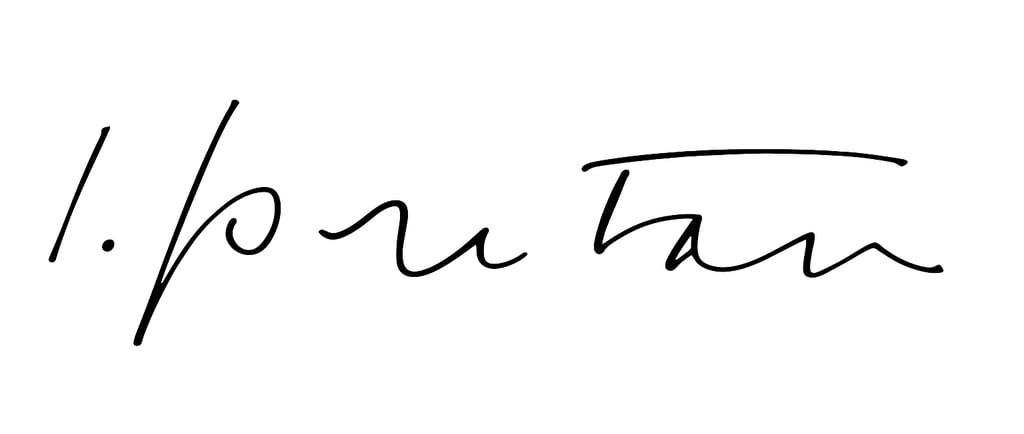Manu-Facture: The Ceramics of Lucio Fontana. A reconsideration of touch and making
Peggy Guggenheim Collection, Venice — October 11, 2025 / March 2, 2026. This exhibition reorients a familiar master by returning us to the register of touch. In the kiln-fired surfaces and the fingerprints still legible in some pieces, Fontana’s “other half” speaks back to the myth of rupture and shows how making—dirt beneath the nails, trials of glaze and the risk of breakage, was integral to his modernity. Manu-Facture asks us to listen: not only to the silence of a cut canvas, but to the retained memory of the hand.
INTERNATIONAL FAIRS & EXHIBITION
Charlotte Madeleine CASTELLI
10/13/20253 min read


By revisiting the earth before the void, Mani-Fattura: The Ceramics of Lucio Fontana at the Peggy Guggenheim Collection redefines one of the most mythologized figures of the twentieth century.
Curated by Sharon Hecker, this exhibition is the first ever museum show entirely devoted to Fontana’s ceramic works, a corpus often overshadowed by the dramatic gesture of the tagli and buchi that came to symbolize his name. Through seventy works, many of them never exhibited before, the show traces a more tactile, sensuous, and communal side of Fontana’s art, one rooted in the gesture of making and the material resistance of clay.
A Universe Shaped by Hand
In these rooms, the visitor moves through decades of relentless experimentation. From figurative sculptures of women, animals, and mythic harlequins to abstract compositions, from plates and crucifixes to architectural panels, the exhibition opens an unexpected lens on the artist’s lifelong dialogue with the earth. Archival photographs and studio documents punctuate the installation, revealing Fontana in motion: his hands immersed in the malleable density of clay, his eyes fixed on the incandescence of the kiln. The exhibition thus situates the ceramic works not as an aside, but as the physical grammar through which Fontana rehearsed his spatial and conceptual revolutions.
“Ceramics was his other half,” wrote one of his contemporaries, a line that becomes the exhibition’s conceptual thread. In clay, Fontana found the counterbalance to the precision and violence of the cut. Where his canvases opened onto infinite voids, his ceramics embrace density, warmth, and imperfection. Cracks, drips, and glazes that refuse control become traces of a creative surrender: proof that Fontana’s radicalism was as much about yielding as it was about piercing.
By foregrounding ceramics, Mani-Fattura dismantles the canonical hierarchy between art and craft. It reclaims a territory where matter, hand, and gesture coalesce. The collaboration with the Mazzotti manufactory in Albisola and the poetic alliance with ceramist Tullio d’Albisola emerge as pivotal: places where Fontana’s conceptual daring intertwined with communal craft and technical discipline. His works from the 1930s to the 1950s (produced amid Fascist Italy, exile in Argentina, and postwar reconstruction) reflect a vision constantly shaped by geography, politics, and collaboration.
In Fontana’s ceramics, materiality becomes an active philosophical agent. The transformation of clay (its soft yielding, its firing, its risk of fracture) becomes a metaphor for creation itself. The exhibition emphasizes how his ceramics are not simply “prefigurations” of Spatialism, but parallel acts of invention. Through color, texture, and surface, Fontana found another path to the infinite: not through absence, but through the intimate alchemy of matter.
Among the highlights is Banana e pera (1938), a small yet eloquent polychrome piece in which color and line converge into an almost primitive eloquence, and Coccodrillo con serpente (1936), a monumental animal composition made in refractory clay at the Mazzotti workshops: its scales and curves testifying to the merging of figuration and abstraction. Plates, facades, and crucifixes appear alongside purely sculptural works, dissolving distinctions between utility and art, decoration and idea.
Fontana’s ceramics rewrite the myth of modernity as immaterial and disembodied. They remind us that the avant-garde was also made of sweat, dust, and flame. In clay, Fontana found what painting could not offer: resistance, vulnerability, and the humility of touch. Mani-Fattura thus operates as both an exhibition and a manifesto—an invitation to reconsider art history not through its monumental gestures, but through its fragile, hand-shaped edges.
Accompanying the exhibition, Mani-Fattura. Le ceramiche di Lucio Fontana, published by Marsilio Arte, expands this narrative with new essays by Sharon Hecker, Raffaele Bedarida, Luca Bochicchio, Elena Dellapiana, Aja Martin, Paolo Scrivano, and Yasuko Tsuchikane. The richly illustrated volume (approx. 200–224 pages) explores technical, social, and historical dimensions of Fontana’s ceramic practice, situating it within a network of cultural exchanges and material experimentation that spans continents.
Supported by Bottega Veneta and the Fondazione Araldi Guinetti, Mani-Fattura extends beyond the exhibition space through lectures, guided tours, and workshops that invite the public to engage with the physical and intellectual dimensions of Fontana’s making.
In the fire of the kiln, Fontana discovered a philosophy of imperfection. His ceramics reject purity, refusing the sterile binaries of abstraction versus figuration, art versus craft. They stand as reminders that innovation often begins in the most modest substances—that revolution can rise from the humblest dust.
Mani-Fattura offers not only a new Fontana but also a new understanding of artistic creation: one where the idea is inseparable from its material birth, and where the artist’s hand remains (irreducibly, indelibly) at the center of the modern imagination.
© Charlotte Madeleine Castelli | All rights reserved
